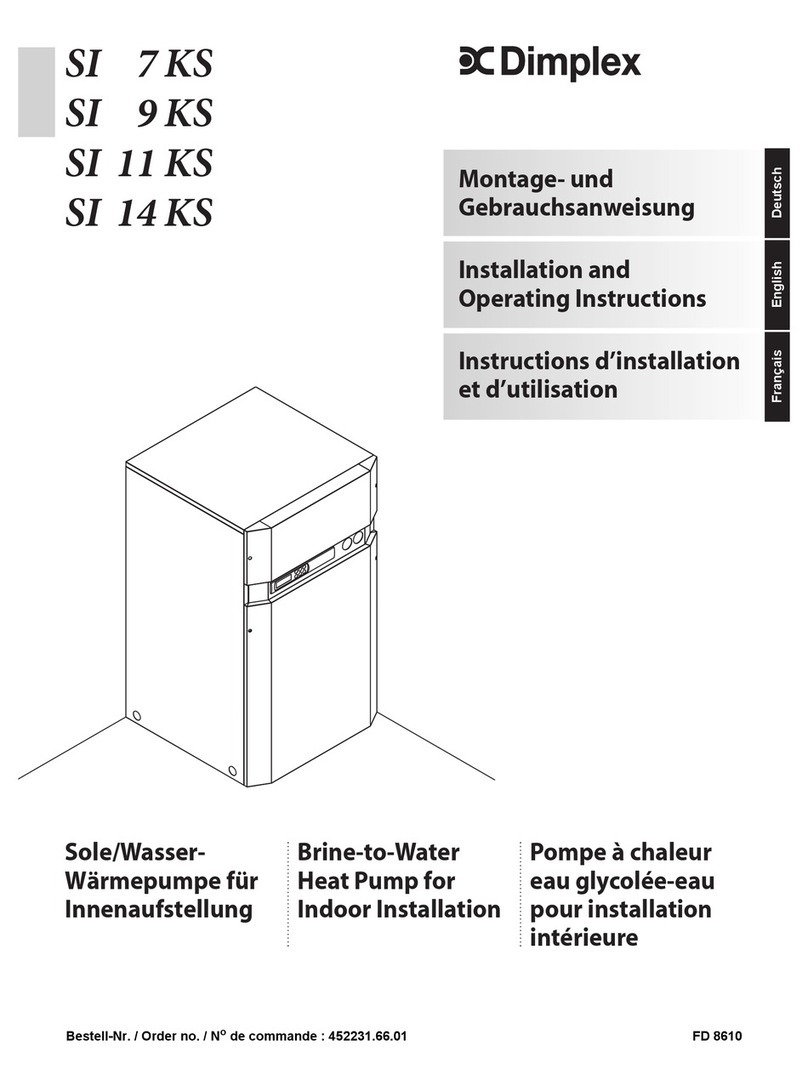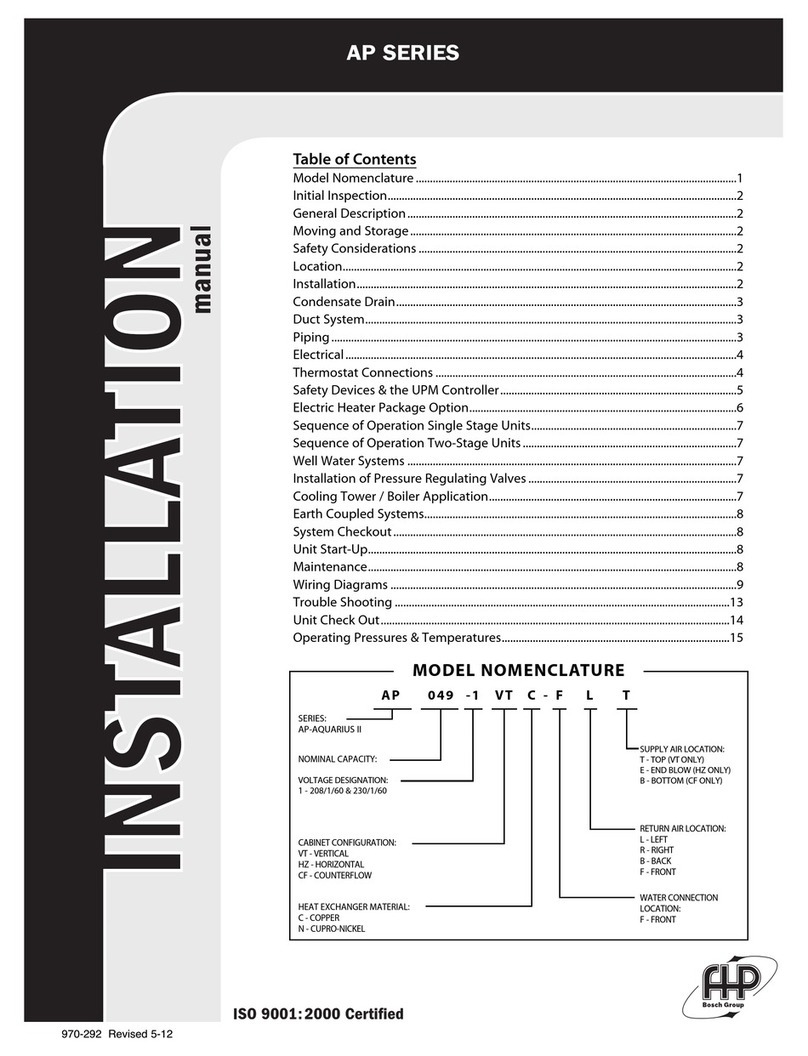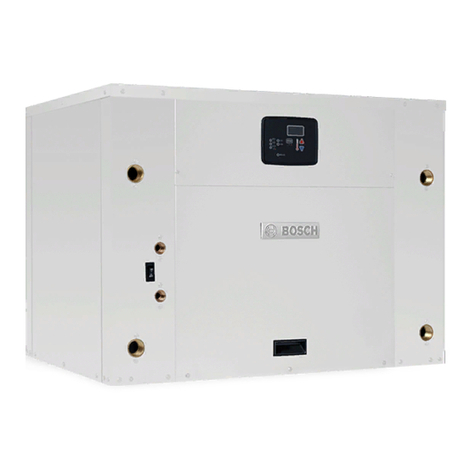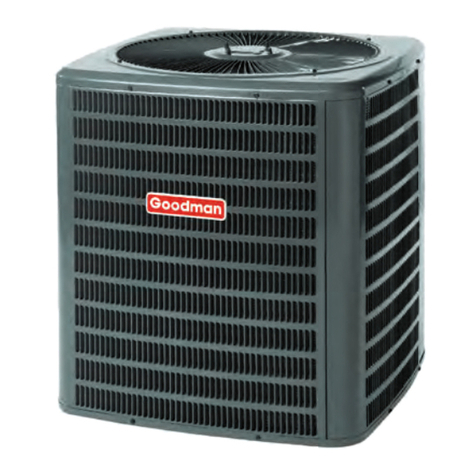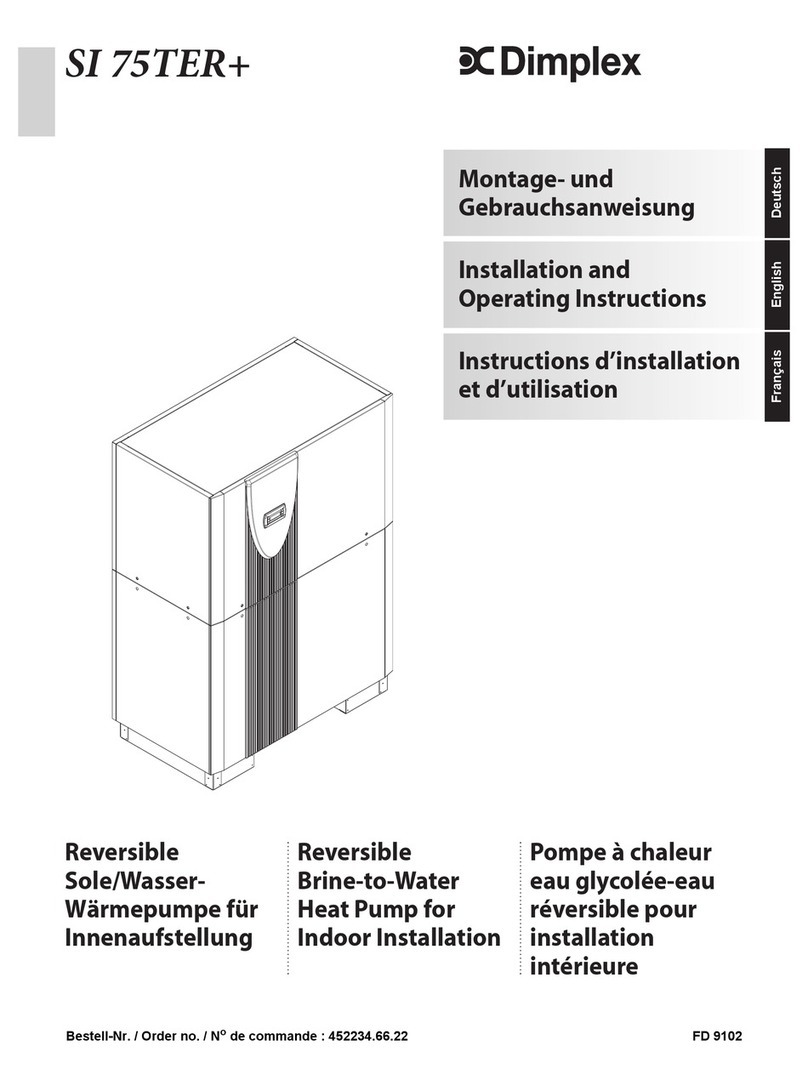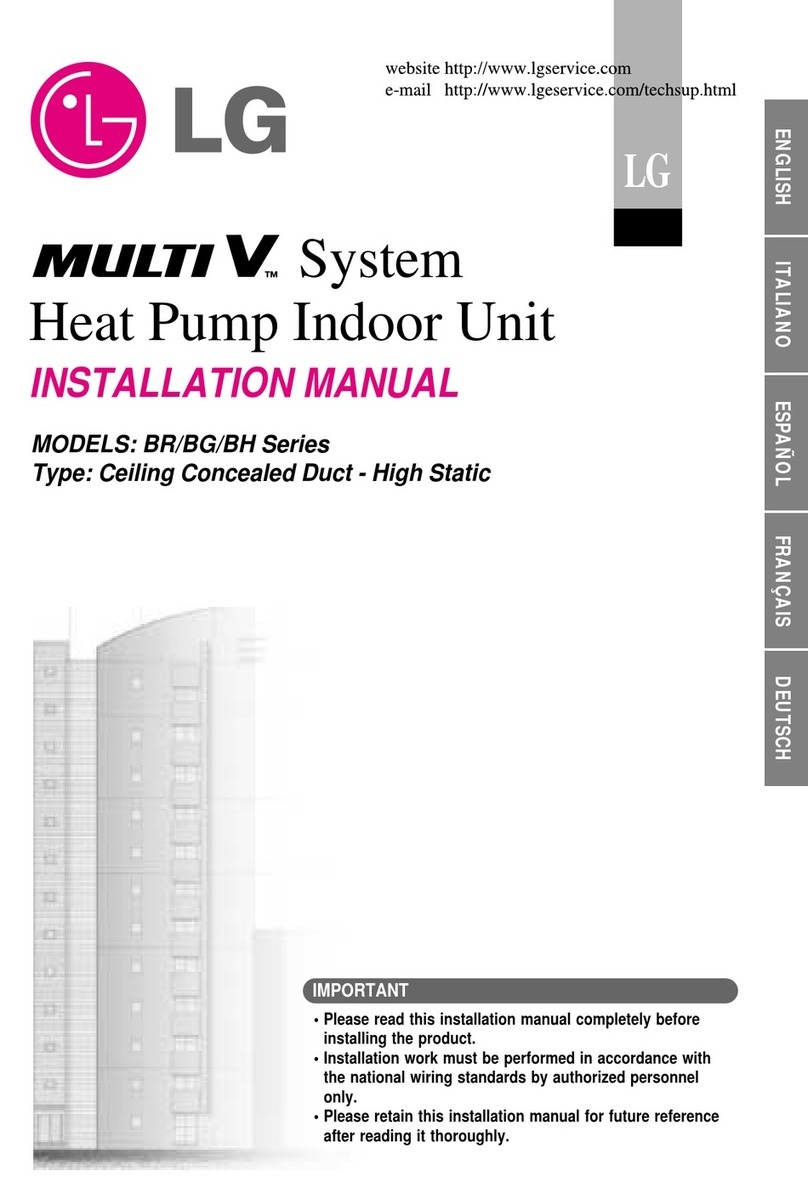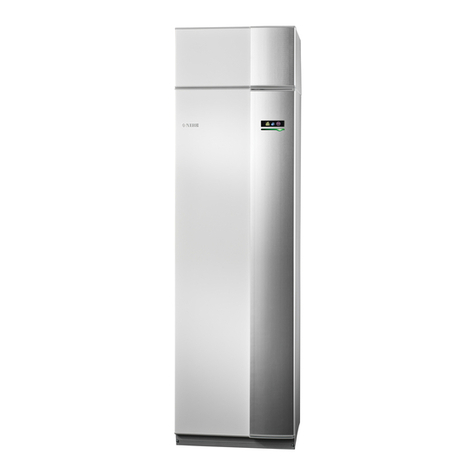
pumping until the 500 micron pressure can be maintained. Close the hand valves at the gauge manifold, remove the vacuum pump
and open the service valves on the heat pump units. The refrigeration system should now be ready to operate.
CHARGING
WMHP heat pump units should be attached to evaporators which are fitted with a thermostatic expansion valve designed and cali-
brated for use with R410a. As a result all charging or charge adjustments must be made by measuring sub-cooling. Even though the
outdoor unit is factory precharged, the charge must be checked and adjusted if required.
Allow sufficient running time, 20 to 30 minutes, for the system to balance. Then check the sub-cooling of the liquid refrigerant at
the outdoor unit to ensure a proper liquid seal is present at the expansion valve. This measurement should be made 2 to 4 inches above
the WMHP cabinet by measuring the temperature of the liquid line and the high side pressure.At outdoor conditions between 80 to
95 degrees the system should be charged to a sub-cooling level of 14 to 16 degrees at the outdoor unit. Superheat should be measured
at the same distance from the suction service valve and should be stable in the range of 15-20 degrees. In the event that superheat is
unstable increase the system charge by one ounce. Re-measure superheat and continue adding charge until superheat is stable.
Should the heat pump unit lose its charge, the whole system will have to be evacuated as described and any leaks repaired before
recharging. When recharging, start by weighing in a charge amount equal to that shown on the unit nameplate then check the sub-
cooling and adjust the charge as required.
ELECTRICAL POWER SUPPLY
The electric installation must be in accordance with the National Electric Code and any local codes or ordinances. Use a separate
branch circuit for this unit and locate a disconnecting means within sight of the unit and readily accessible for service personnel.
Minimum circuit ampacity and maximum circuit breaker size information is shown on the unit nameplate. Use copper conductors
only. NOTE: A Compressor Time Delay Relay may be required and will need to be field installed if rapid cycling of the compressor
occurs.
WARNING: Disconnect all power to unit before servicing field wires or removing control package. Make sure that
a disconnecting means is within sight from, and is readily accessible from, the unit. Disconnect all power to the unit
before performing any maintenance or service on it. Lock out and tag weitches with a suitable warning label. Failure
to follow this WARNING can cause electrical shock, fire, personal injury or death.
CAUTION: Operation of unit on improper line voltage constitutes abuse and could affect unit reliability and opera-
tion. See unit rating plate. Do not install a system where voltage or phase imbalance may fluctuate above or below
permissible limits. If low voltage conditions exist, use of Start Assist Device may be required.
THERMOSTAT WIRING
Run a thermostat cable of at least 5 - wires between the heat pump unit and the indoor unit. Pigtail leads are provided at the heat
pump unit. Make connections using wire nuts and tape for security. (See figure 2)
DEFROST CONTROL
The WMHP is equipped with a defrost control which is activated by a temperature input and terminated by either a temperature
input or a time limit. When the control receives a temperature input from the coil temperature sensor it will initiate a demand defrost
cycle which will last a maximum of 10 minutes. Every 30, 60 or 80 minutes (user selectable; 80 min default) the defrost cycle will be
repeated as long as the sensor is closed. Once the coil temperature sensor is satisfied the defrost period will end and time accumula-
tion will stop. The timer is reset at the end of each defrost period.
SEQUENCE OF OPERATION
Cooling Mode
When the thermostat is placed into the cooling mode the reversing valve will be energized. On a call for cooling the contactor will
be energized and the compressor and condenser fan will operate until the thermostat is satisfied.
Heating Mode
When the thermostat is placed into the heating mode the reversing valve will not be energized. On a call for heat the contactor will
be energized and the compressor and condenser will operate until the thermostat is satisfied.
Defrost Mode
The defrost control is a time/temperature device which provides a field selectable time period (30, 60 and 80 minutes) between
defrost cycles. The control is factory set at 80 minutes. To change the time period move the white quick connector to the desired
terminal.
The timer and defrost cycle are active only when the contactor is energized and the defrost thermostat is closed.
The defrost cycle can be initiated as follows:
1. Turn off power to the outdoor unit.
2. Disconnect the outdoor fan motor lead from DF2 on the defrost control.





